Information
-
Site
-
Civica Authority Reference
-
Location
-
Conducted on
-
Prepared by
-
Others present:
Signage
-
Is there a warning notice (CPR Chart) erected?<br>Act s17
-
Please photograph the sign.
-
Is the sign in a prominent position in the immediate vicinity of the swimming pool?<br>Act s17(1)
-
Is the sign legible from 3 metres?<br>Reg Cl 11(a)
-
Is the sign maintained in a clearly legible condition?<br>Reg. Cl 11(b)
-
Clause 10 (2) of the Swimming Pools Regulation 2018 (the current regulation) provides that if a sign was erected on or before 31 August 2019, the content of the sign may comply with clause 10 (1) of the Swimming Pools Regulation 2008 (as in force immediately before its repeal) as an alternative to the content requirements of the current regulation.
This savings provision ceases to apply if the swimming pool to which the sign relates is substantially altered or rebuilt.
It is important to note that for the savings provision to apply, the sign must have been erected on or before 31 August 2019. This means new or replacement signs must comply with the current requirements. -
Was the sign erected on or before 31 August 2019?
Swimming Pools Regulation 2018- Part 3
-
Does the sign contain the words "Young children should be actively supervised when using this swimming pool”?<br>cl 10(1)(a)(i)
-
Does the sign contain the words “Pool gates must be kept closed at all times”?<br>cl 10(1)(a)(ii)
-
Does the sign contain the words "“Keep articles, objects and structures clear of the pool fence at all times”?<br>cl 10(1)(a)(iii)
-
Does the sign contain a simple flow chart containing details of resuscitation techniques?<br>cl 10(1)(b)
-
The Cardiopulmonary Resuscitation Guideline means ANZCOR Guideline 8: Cardiopulmonary Resuscitation published in January 2016 (attached).
The Guideline generally indicates:
- A compressions-to-ventilation ratio of 30:2
- The "DRSABCD" steps
Other guidelines from Australian Resuscitation Council are available via https://resus.org.au -
Are the techniques on the sign set out in accordance with the Cardiopulmonary Resuscitation Guideline and any other relevant guidelines of the Australian Resuscitation Council?<br>cl 10(1)(b)
-
Does the sign contain a statement to the effect that formal instruction in resuscitation is essential?<br>cl 10(1)(c)
-
Does the sign contain the name of the teaching organisation or other body that published the sign?<br>cl 10(1)(d)
-
Does the sign contain the date of its publication?<br>cl 10(1)(d)
-
This section will assess if the sign content complies with the 2008 regulation (as in force immediately before it was repealed).
If the sign does not comply, it will need to be replaced with a sign that complies with the currently in force regulation.
Swimming Pools Regulation 2008
-
Does the sign contain the words "YOUNG CHILDREN SHOULD BE SUPERVISED WHEN USING THIS SWIMMING POOL"<br>2008 cl 10(1)(a)(i)
-
Does the sign contain the words "KEEP ARTICLES, OBJECTS AND STRUCTURES AT LEAST 900MM CLEAR OF THE POOL FENCE AT ALL TIMES"?<br>2008 cl 10(1)(a)(ii)
-
Does the sign contain the words "POOL GATES MUST BE KEPT CLOSED AT ALL TIMES"?<br>2008 cl 10(1)(a)(iii)
-
Does the sign contain a simple flow sequence containing details of resuscitation techniques for infants, children and adults?<br>2008 Reg. Cl 10(1)(b)
-
In the 2008 Regulation, the Cardiopulmonary Resuscitation Guideline refers to Guideline 7: Cardiopulmonary Resuscitation published in February 2006 by the Australian Resuscitation Council (copy attached).
The guideline generally outlines:
- compression-to-ventilation ratio of 30:2 for all ages
- the steps "DRABCD" -
Are the details of resuscitation techniques set out in accordance with the relevant provisions of the 2006 guideline?<br>2008 cl 10(1)(b)(i)
-
Do the details of resuscitation techniques comply with the other relevant guidelines of the Australian Resuscitation Council?<br>2008 cl 10(1)(b)(ii)
-
Are the details of resuscitation techniques illustrated by drawings with key words only in bold print?<br>2008 Reg. Cl 10(1)(b)(iii)
-
Does the sign contain a statement that formal instruction in resuscitation is essential?<br>2008 Reg. Cl 10(1)(c)
-
Does the sign contain the name of the teaching organisation or other body that published the sign?<br>2008 Reg. Cl 10(1)(d)
-
Does the sign contain the date of its publication?<br>2008 cl 10(1)(d)
Spa Pool exemption
-
Under section 3 of the Act, <br>spa pool includes any excavation, structure or vessel in the nature of a spa pool, flotation tank, tub or the like.<br>Note that a spa bath or anything that is situated within a bathroom is not subject to the Act.
-
Is the pool under assessment a spa pool?
-
Section 20 of the Act provides a spa pool is not required to be surrounded by a child-resistant barrier so long as access to the water contained in the spa pool is restricted at all times when the spa pool is not in actual use.
The means of restricting access for the purposes of this clause are specified in the regulations. -
Is the spa pool covered and secured by a door/lid/grille/mesh or the like?
-
The spa pool does not meet the requirements for the exemption provided by section 20 of the Act.
The spa pool must be surrounded by a barrier in accordance with the other relevant requirements (as for an indoor pool or an outdoor pool).
Complete the other parts of the checklist as though the spa pool were any other kind of swimming pool. -
Is the child-resistant structure (the door/lid/grille/mesh) lockable?<br>Reg cl 9
-
Is the child-resistant structure (the door/lid/grille/mesh) of substantial construction?<br>reg cl 9(a)
-
Is the child-resistant structure (the door/lid/grille/mesh) free from any opening through which it is possible to pass a testing apparatus?<br>Note: testing apparatus means a cylindrical test object having a diameter of 105 millimetres, plus or minus 1 millimetre, and having at least one solid flat-faced end. (cl 3(1) of the 2018 regulation)<br>Reg cl 9(a)
-
Is the child-resistant structure (the door/lid/grille/mesh) fastened by a device?<br>Reg cl 9(b)<br>Examples of such devices may include a metal or plastic hasp/latch device or clip with integrated lock.
-
Is the fastening device of substantial construction?<br>Reg cl 9(b)
-
Is the fastening device free of any opening through which it is possible to pass a testing apparatus?<br>Note: testing apparatus means a cylindrical test object having a diameter of 105 millimetres, plus or minus 1 millimetre, and having at least one solid flat-faced end. (cl 3(1) of the 2018 regulation)<br>Reg cl 9(b)
-
Is access to the water in the spa pool restricted by the device at all times when the spa pool is not in actual use?<br><br>Note: Obviously this cannot be determined in an absolute sense, however compliance with the requirement may be indicated by the access being restricted at all times during the inspections and by interview of the owner/occupier of the premises.
Outdoor pool
-
Is the pool (or part of the pool) an outdoor swimming pool?
Barrier - General
-
Does the barrier separate the pool from ALL residential buildings or places adjoining the premises?<br>Act s7(1)(a)
-
Note: Residential building is defined by the Act:
"residential building means a building (such as a dwelling-house, residential flat building or boarding-house) that is solely or principally used for residential purposes, and includes any structure (such as a garage or shed) that is ancillary to any such building, but does not include:
(a) a building that merely forms part of a complex of buildings (such as a school or recreational centre) that is principally used for non-residential purposes, or
(b) a moveable dwelling, or
(b1) tourist and visitor accommodation, or
(c) a shed that is ancillary to a swimming pool and the primary purpose of which is to store equipment that is used in connection with the swimming pool (but not a shed of a kind prescribed by the regulations), or
(d) a building or structure of a kind prescribed by the regulations." -
Is the barrier a permanent structure?<br>As1926.1-2012 s2.1
-
Is the barrier in a good state of repair as an effective and safe child-resistant barrier?<br>Act s15(1)
-
Is the area within 500mm of the barrier free of any features or objects that would reduce the height of the barrier?<br>As1926.1-2012 s2.3.1
-
Features diagram
-
Is finished ground level a permanent stable surface?<br>As1926.1-2012 s1.3.6
-
Is the gap between bottom of barrier and finished ground level no greater than 100mm?<br>As1926.1-2012 s2.3.7
-
Is the barrier a permanent structure?
-
Are all parts of the barrier (other than retaining walls) vertical?
-
Are the non-vertical parts of the barrier leaning away from the pool?
-
Are the non-vertical parts of the barrier leaning away from the pool BY NO MORE THAN 15 DEGREES?
-
Is the width of all vertical gaps <100mm?<br>As1926.1-2012 s2.3.6
-
Internal Pool Barrier
-
Are there parts of the barrier that are NOT boundary fences?
-
Is the height of all internal barriers from top of fence to finished ground level on the outside of the pool area NO LESS THAN 1200mm?<br>As1926.1-2012 s2.1
-
Are there internal parts of the barrier that measure more than 1800mm in height? (measured on the OUTSIDE of the pool area)
-
Please photograph these sections.
-
Are there internal parts of the barrier measuring LESS THAN 1800mm in height?<br>(non-boundary barriers <1800mm have NCZs applied)
-
3D NCZ DIAGRAM
-
NCZ1 clear?<br>NCZ1 is measured vertically on outside face of barrier.<br>No handholds or footholds, or objects or plants that will facilitate climbing in NCZ.<br>No projections or indentations with horizontal surface >10mm.<br>As1926.1-2012 s2.2.2(a)
-
NCZ2 clear?<br>NCZ2 is a quadrant measured the outside of the barrier created by 900mm radius down from the top of NCZ1.<br>No handholds or footholds, or objects or plants that will facilitate climbing in NCZ.<br><br>Note: NCZ2 is always immediately adjacent to NCZ1 on all barriers<br>As1926.1-2012 s2.2.2(b)
-
NCZ3 clear?<br>NCZ3 is a quadrant on the outside of barrier created by a 900mm radius UP from the top of the barrier<br>No handholds or footholds, or objects or plants that will facilitate climbing<br><br>Note: If the top of NCZ1 is below the top of the barrier, NCZ3 extends vertically down to the top of NCZ1.<br>Note: NCZ3 does not apply to any item or component on, or that is part of, the barrier. NCZ3 is applicable only to the space created by the quadrant.<br>As1926.1-2012 s2.2.2(c)
-
NCZ4 clear?<br>NCZ4 is a 900mm high by 300mm deep rectangular space on the inside of the barrier, aligning with NCZ1.<br>No handholds or footholds, or objects or plants that will facilitate climbing in the NCZ.<br><br>Note: Only applies where barrier has vertical openings 10mm - 100mm in width.<br><br>As1926.1-2012 s2.2.2(d)
Boundary Pool Barrier
-
Are there boundary fences acting as a barrier to the pool?<br>AS1926.1-2012 2.2.4
-
NCZ5 diagram
-
Are all parts of the boundary barrier no less than 1800mm, measured from inside the pool area?<br>As1926.1-2012 s2.2.4
-
NCZ5 clear?<br>NCZ5 is a quadrant of 900mm radius, measured down from the top of the inside of the boundary pool barrier<br>No handholds or footholds, or objects or plants that will facilitate climbing in NCZ.<br>As1926.1-2012 s2.2.4(a)
-
Where internal pool barrier intersects into NCZ5, does the top of internal barrier: <br>- measure less than 50mm and intersect at angle between 45 and 135 degrees,<br>OR<br>- continue at >1800mm for at least 900mm.<br>As1926.1-2012 s2.2.4(b)
Perforated material or mesh AS2916.1-2012 2.3.2
-
Are any parts of the barrier formed by perforated and/or mesh materials?
-
Are there any apertures greater than 100mm?<br>Note: apertures shall be measured horizontally across their widest part.
-
Are there any apertures greater than 13mm?
-
Does the part of the barrier with apertures greater than 13mm have a height of not less than 1800mm?
-
Support a 25kg weight on the top of the barrier.
-
Does the 25kg weight reduce the barrier height to less than 1200mm?
-
Lift the bottom of the barrier with a force of 100N.
-
Does this result in a gap between the bottom of the barrier and the surface beneath of more than 100mm?
-
Was a force gauge or similar device used?
Surface projections and indentations AS 1926.1-2012 2.3.4
-
Are any projections and indentations or combination thereof within NCZ1?
-
Do the projections and indentations or any combination thereof in NCZ 1 for a horizontal surface with a depth NO GREATER than 10mm?
-
Are there any projections and/or indentations with horizontal surfaces of a depth greater than 10mm?
-
Are all such lower surfaces no less than 900mm from the top of the barrier?
-
Are all such higher surfaces no less than 900mm above the finished ground level?
-
Are high and low surfaces no less than 900mm apart?
Windows
-
Are there windows directly opening into the pool area?
-
Enter information for each window.
Window
-
Photograph the window
-
Describe the location of the window in the pool area.
-
What is the height of the sill of the lowest opening panel of the window to the finished ground level in the pool area?
-
Which of the following applies?
- The openable portion of the window is totally covered by bars or a metal screen
- The openable portion of the window will only open to a maximum of 100mm
- The openable potion of the window is fixed so that it will remain closed
- None of the above
-
Are the bars or the metal screen fixed to the building with fasteners that can only be removed by the use of a tool?
-
Is the window fixed to the building with fasteners that can only be removed by the use of a tool?
Indoor pools (doors)
-
Are there doors providing access to the pool area?
-
Make an entry for each door:
Door into pool area
-
Photograph the door from outside the pool area.
-
Is the door fitted with a self-closing device?
-
Does the self-closing device close the door, with a stationary start, wihtout applicaiton of amanual force from the following positions?
-
From resting on the latch?
-
From partially open positions?
-
From fully open?
-
Is the door fitted with a latch?
-
Is the latch a type that will automatically operate on the closing of the door and prevent the door from being reopened without being manually released?
-
The latch must NOT be able to be inadvertently adjusted during operation
-
The latch must NOT be able to be locked in the 'open' position
-
The latch must NOT be able to be adjusted without the use of tools.
-
The latch must not be able to be released by the insertion of any implement in the 10mm opening between the door and the jamb or the the latch and its catchplate.
-
Is the latch on the outside of the door?
-
Is the latch not less than 1500 mm above the floor?
-
NCZ1 applies to the outside of the door. The top of NCZ1 shall be 1200mm or less from the floor.
-
NCZ1 is a 900mm vertical plane on the outside face of a barrier. Within an NCZ there shall be no handholds or footholds, objects or plants that will facilitate climbing.
-
Is NCZ1 clear for the door?
-
Are there any pet doors in the child-resistant doorset?
-
Are any parts of the barrier formed by perforated and/or mesh materials?
-
Are there any apertures greater than 100mm?<br>Note: apertures shall be measured horizontally across their widest part.
-
Are there any apertures greater than 13mm?
-
Does the part of the barrier with apertures greater than 13mm have a height of not less than 1800mm?
-
Support a 25kg weight on the top of the barrier.
-
Does the 25kg weight reduce the barrier height to less than 1200mm?
-
Lift the bottom of the barrier with a force of 100N.
-
Does this result in a gap between the bottom of the barrier and the surface beneath of more than 100mm?
-
Was a force gauge or similar device used?
-
Does the door open towards the pool?
Gates
Gates
-
Make entry for each gate into the pool area.
Gate
-
Photograph this gate
-
Describe the location of this gate in relation to the pool area.
-
Is the gate kept securely closed?<br>Act s16
-
Does gate swing away from pool area?<br>As1926.1-2012 s2.4.1.1
-
Does gate swing freely through its entire arc of operation? (i.e. cannot be wedged open)<br>As1926.1-2012 s2.4.1.1
-
Is the gate's full arc of operation clear of any building or doorway?<br>As1926.1-2012 s2.4.1.1
-
Confirm overall height >1200mm (on outside of pool area)?<br>As1926.1-2012 s2.1
-
Does the self-closing device close the gate, with a stationary start, without the application of a manual force and operates the latch from:
-
gate resting on latch position?<br>AS1926.1-2012 s2.4.1.2
-
partially open positions?<br>AS1926.1-2012 s2.4.1.2
-
fully open position?<br>AS1926.1-2012 s2.4.1.2
-
From any position after a 25kg weight has been placed on the top rail or component, 100mm from the outer edge of the locking stile of the gate for 30 seconds and then removed?<br>AS1926.1-2012 s3.4
-
Are the hinges outside NCZs 1 and 2?
-
Do the gate hinges have a top surface sloped at 60 degrees to the horizontal or more?
-
Do the gate hinges create an opening between the gate post and the stile of more than 10mm?<br>AS1926.1-2012 cl2.4.3
-
Do the gate hinges protrude out from the barrier with a horizontal top surface depth greater than 10mm?
-
Is the gate glass?
-
Does the gate use top and bottom pivot style hinges?
-
Glass gate with pivot hinges
As1926.1-2012 figure 2.4 -
Does the gate comply with the dimensions of this diagram?
-
Is the gap under the closed gate less than 100mm?<br>AS1926.1-2012 s2.4.1.1
-
Lift gate upwards and pull downwards with a force of 250N.<br>The above movement of the gate must not:<br>1. Release the latch<br>2. unhinge the gate<br>3. increase gap under gate to >100mm<br><br>AS1926.1-2012 s2.4.1.3
-
Was a force gauge used to measure force applied?
-
The latch must NOT be able to be:
-
inadvertently adjusted during operation.<br>AS1926.1-2012 s2.4.2.1
-
locked in the 'open' position.<br>AS1926.1-2012 s2.4.2.1
-
adjusted without the use of tools.<br>AS1926.1-2012 s2.4.2.1
-
Is the release point for the latch NO LESS than 1500mm from finished ground level?
-
Does the gate have vertical openings greater than 10mm?
-
Is the release point for the latch on the outside of the barrier?
-
Is the release point in such a position that to release the latch from the outside it will be necessary to reach over or through the barrier at a height of not less than 1200mm above the finished ground level or not less than 1000mm above the lower horizontal member?
-
Is a hand-hole provided in the gate?
-
Is the release point for the latch at least 150mm below the edge of any hand-hole provided?
-
Is release point for latch at least 150mm below the top of the barrier?
-
Are there NO openings greater than 10mm within an area bounded by:<br>a) an effective radius of 450mm from the latch release; and<br>b) the top of the barrier, if this intersects the area described in a)?
-
Is the shield free of sharp edges?
-
Are the edges of the adjacent parts of the shield on the gate and the barrier rounded or chamfered to prevent a hazard when the gate closes?
-
Is a hand-hole provided in the gate?
-
Is the release point for the latch at least 150mm below the edge of any hand-hole provided?
-
Is the bottom of the opening no less than 1200mm above finished ground level?
-
Which is higher - the top of the hand-hole, or a point 150mm above the top of the latch release?
- the top of the hand-hole
- a point 150mm above the latch release
-
Does the shielding extend up to a horizontal line through the top of the hand-hole?
-
Does the shielding extend 150mm above the top of the latch release?
-
Is release point for latch at least 150mm below the top of the barrier?
Retaining walls and balconies
-
Are there any retaining walls or similar features that act as a barrier?
-
Are there retaining walls (or similar features) ABOVE the pool level that act as a barrier?
-
Are all retaining walls (or similar features) ABOVE the pool sloping away from the pool by 15 degrees or LESS?<br>AS1926.1-2012 cl 2.5.1(a)
-
Is the retaining walls (or similar features) ABOVE the pool 1800mm or more in height?
-
Where the retaining wall (or similar feature) is less than 1800mm in height, the barrier must comply with clauses 2.1, 2.2.1, 2.2.2, 2.3.4 and 2.3.5(a) (AS 1926.1-2012 2.5.1(b)).
To comply with these clauses, it is necessary for a barrier to be erected on top of the retaining wall (or similar feature), as NCZs are on the OUTSIDE of the barrier (noting the outside of a barrier is the side away from the pool).
see Figure 2.10(b)(i) attached. -
Is there a barrier on top of the retaining wall with a height of at least 1200mm (as indicated in Figure 2.10(b)(i) and (c)(i)?
-
Assess the compliance of the barrier on the retaining wall above the pool as though it were any other kind of pool barrier (see other parts of this checklist).
-
Note: Although a barrier is not required by the Swimming Pools Act 1992 to be on top of the retaining wall over 1800mm, the Building Code of Australia may require a barrier to prevent falls if the retaining wall forms part of, or is directly associated with, a delineated path of access to a building from the road, or a delineated path of access between buildings.
-
Are there retaining walls (or similar features) BELOW the pool level that act as a barrier?
-
Are all retaining walls (or similar features) BELOW the pool level sloping towards the pool by 15 degrees or LESS?<br>AS1926.1-2012 cl 2.5.1(b)
-
Are all the retaining walls (or similar features) BELOW the pool level no less than 1800mm in height?
-
-
Note: Although a barrier is not required by the Swimming Pools Act 1992 to be on top of the retaining wall over 1800mm, the Building Code of Australia may require a barrier to prevent falls if the retaining wall forms part of, or is directly associated with, a delineated path of access to a building from the road, or a delineated path of access between buildings.
-
Where the retaining wall (or similar feature) is less than 1800mm in height, the barrier must comply with clauses:
- 2.1 (general),
- 2.2.1 (NCZs general),
- 2.2.2 (NCZs 1, 2, 3 & 4),
- 2.3.4 (surface projections & indentations), and
- 2.3.5(a) (horizontal components).
(AS 1926.1-2012 2.5.2(b)) -
Are all retaining walls (or similar features) BELOW the pool level no less than 1200mm in height?
-
Where the retaining wall (or similar feature) is less than 1800mm in height, the barrier must comply with clauses:
- 2.1 (general),
- 2.2.1 (NCZs general),
- 2.2.2 (NCZs 1, 2, 3 & 4),
- 2.3.4 (surface projections & indentations), and
- 2.3.5(a) (horizontal components).
(AS 1926.1-2012 2.5.2(b)).
For a retaining wall (or similar feature) that is less than 1200mm in height to comply with these clauses, it is necessary for a barrier to be erected on top of the retaining wall (or similar feature).
see Figure 2.10(c)(ii) attached. -
Assess the compliance of the barrier formed by the retaining wall below the pool as though it were any other kind of pool barrier (see other parts of this checklist).
-
Assess the compliance of the barrier formed by the retaining wall below the pool as though it were any other kind of pool barrier (see other parts of this checklist).
-
Does a barrier intersect a retaining wall that is below the pool level?
-
-
Does the barrier extend to the outer edge of the retaining wall?<br>AS 1926.1-2012 2.5.2
-
Does the barrier either:<br>- OPTION C: overhang the retaining wall by 900mm, OR<br>- OPTIONS A & B: return 900mm along the retaining wall in either direction?<br>AS 1926.1-2012 2.5.2
-
Is option A or B used?
-
Is the barrier affixed as close as practicable to the outside face of the retaining wall?<br>As 1926.1-2012 2.5.2
Strength and Rigidity
Strength and Rigidity
-
Are there vertical openings in the barrier?
-
Conduct strength and rigidity checks to vertical openings - apply 150N of force to a testing apparatus.
-
Is a 105mm diameter metal cone able to pass through any opening when 150N of force is applied?<br>AS1926.1-2012 s3.1 & Appendix A
-
Was a forge gauge or similar measuring device used?
-
Are there posts and footings forming part of the barrier?
-
Conduct strength and rigidity checks to posts and footings - apply 330N of force at 1200mm height.
-
Is there any permanent damage to the post? <br>AS1926.1-2012 s3.2
-
Did the footings loosen to impair the effectiveness of the barrier?<br>
-
Was a forge gauge or similar measuring device used?
-
Are there rigid structural components such as panel infills, top and bottom rails, rods, palings, pickets and the like?
-
Conduct strength and rigidity test to rails/horizontals - apply 330N of force.
-
Is there any breaking, sign of fracture, loosening so the effectiveness of the panel is impaired, or permanent deformation by more than 1/200 over its length.<br>AS1926.1-2012 s3.3
-
Was a forge gauge or similar measuring device used?
Overview
-
Take photographs showing the general condition and arrangement of the barrier here, including compliant areas.
-
Additional Comments
-
Do you consider there to be a significant risk to public safety?
-
Section 23A(1) of the NSW Swimming Pools Act 1992 (as in force at time of writing) allows the Council to carry out some or all of the requirements of a direction it has given if the Council considers that the requirements of the direction need to be carried out urgently as there is a significant risk to public safety.
-
What is the nature of the risk to public safety?
-
Do you consider the safety of a person to be at risk?
-
If Council considers that the safety of a person is at risk if the requirements of a direction were not carried out as soon as possible, it may serve the direction without notice. See section 23(6) of the Swimming Pools Act 1992.
-
What is the nature of the risk?






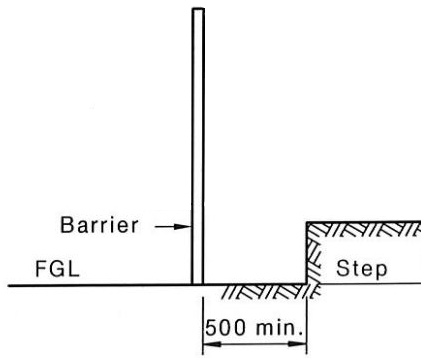
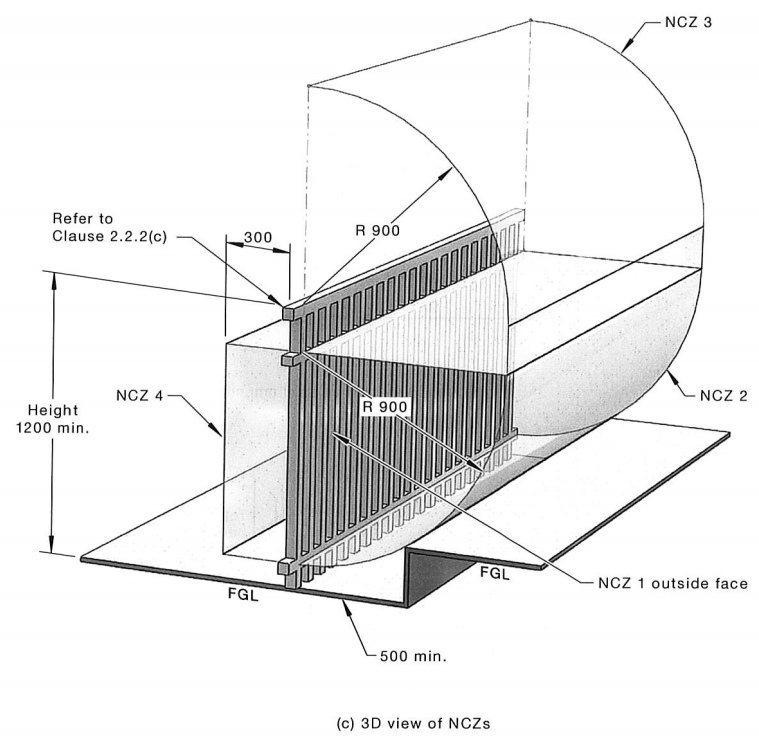
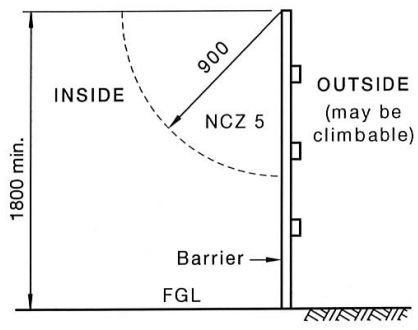
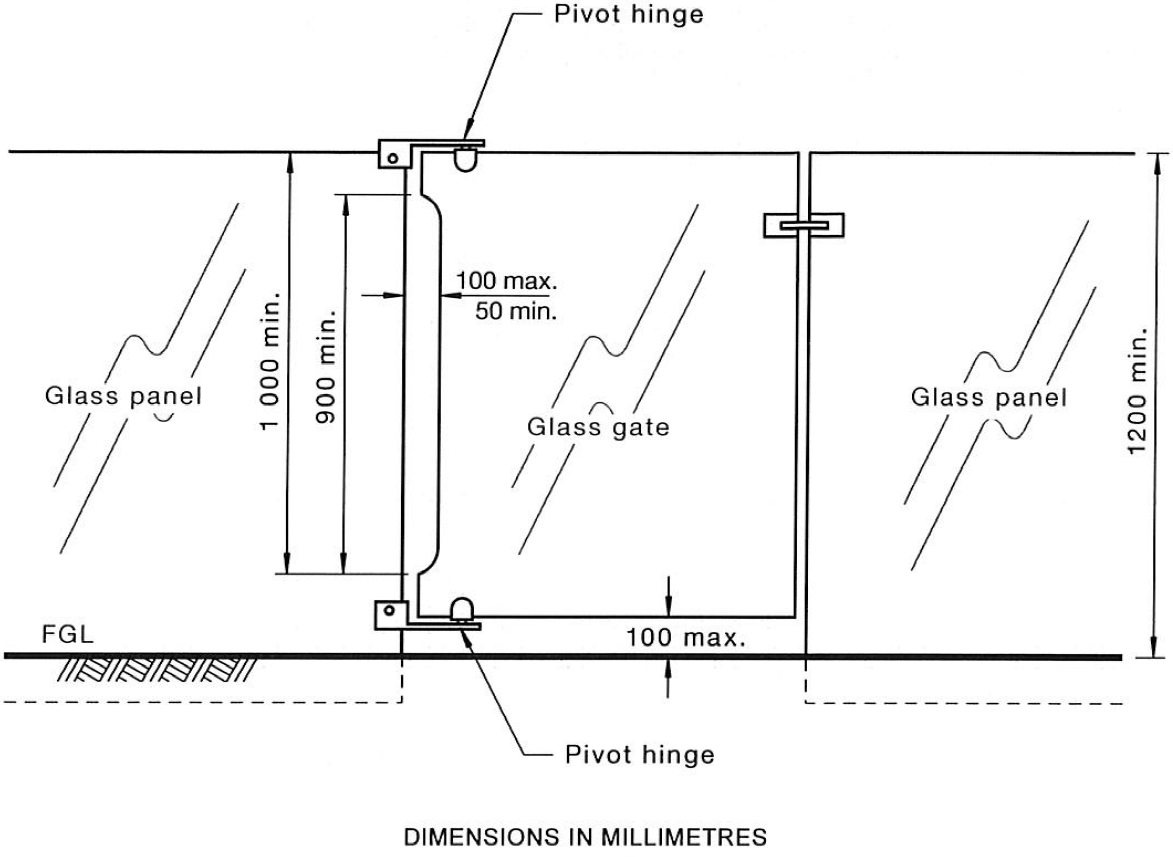
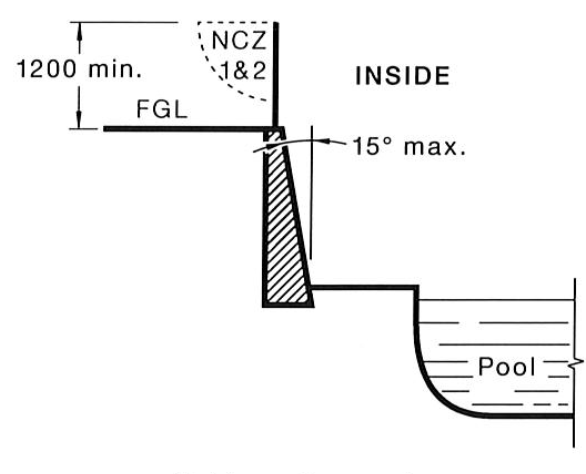
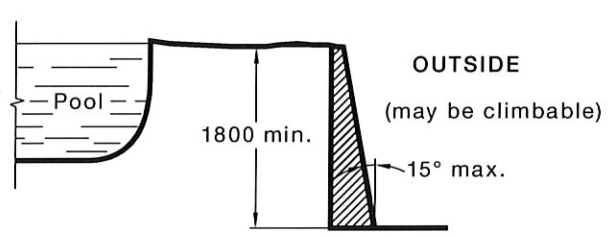
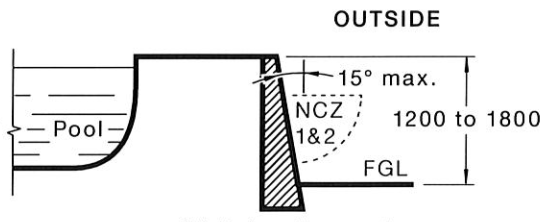
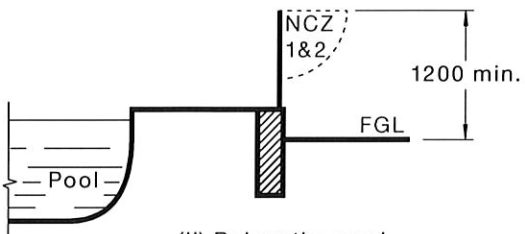
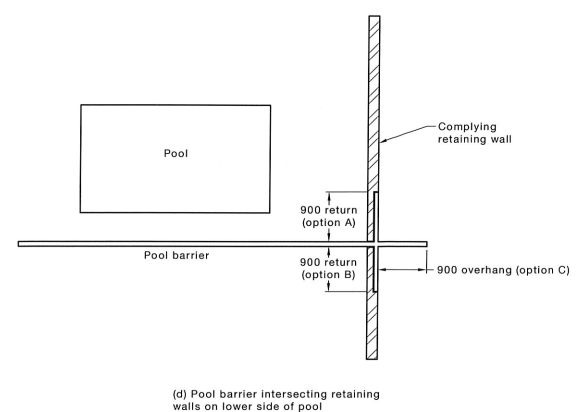







![(AS1926.1-1986) [Installed before 01/09/2008] Swimming pool inspection (AS1926.1-1986) [Installed before 01/09/2008] Swimming pool inspection](/media/4c579fbd-417f-4bb3-a1e1-e1868d5bc7a6)
